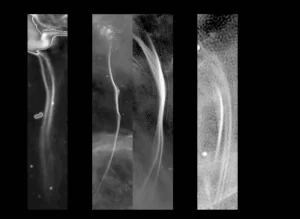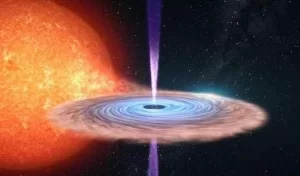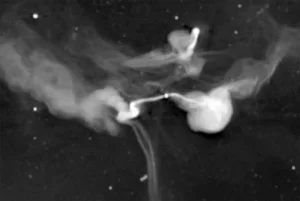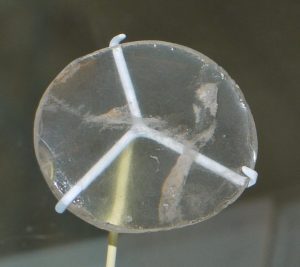Starship tracks? Scientists discover many strange “filaments” in the depths of the universe

Astrophysicist Farhad Zadeh of Southwestern University recently discovered some strange “filaments” in the distant depths of the universe. They are not shock waves and probably do not belong to any known structure. These “filaments”, which can be arranged at equal intervals like strings, have also been found near the supermassive black hole at the center of the Milky Way, but this time on a much larger scale.

A close-up of a “filament” at radio wavelengths. The “filament” on the far left exists beyond the Milky Way. The length reaches 100,000 parsecs (equivalent to 330,000 light-years). The other three groups are “filaments” in the Milky Way, with lengths of only 28 parsecs (corresponding to 91 light-years), 12 parsecs (corresponding to 39 light-years) and 6 parsecs (corresponding to 20 light-years). Rudnick
Zadeh first discovered these “filaments” in the early 1980s. For more than 40 years, Zadeh has maintained a keen interest in these mysterious “filaments”. Earlier this year, he discovered nearly 1,000 of these “filaments” near the center of the Milky Way.
The newly discovered “filament” is located within a galaxy cluster about 1 billion light-years from Earth that contains thousands of galaxies. Some of these galaxies are active radio galaxies, which Zadeh thinks might be related to these [[large-scale]] “filaments.”

Although the newly discovered “filaments” look similar to those in the Milky Way, there are some key differences. First, they are very long, 100 to 10,000 times longer than the latter; second, they are ancient. Their magnetic fields are also weaker. Other “filaments” extend at an odd 90-degree angle to the jet from the galaxy’s central black hole.
But there are also some very key similarities between the two. First of all, their aspect ratio is the same as the “filament” in the Milky Way; secondly, their energy-carrying mechanism may be the same: the closer to the black hole, the higher the energy of the electrons in the “filament”; The farther away, the lower the energy of the electron.

Zadeh thinks that black hole jets can provide the “filaments” with the particles they need, but there must be some unknown reason accelerating them, otherwise they would not be so long. If electrons travel along the “filament” at the speed of light, it will take 100,000 years to complete the journey.
Zadeh thinks these “filaments” may be the product of galactic winds encountering obstructions, such as nebulae. Galactic winds form trails similar to comet tails when they encounter obstructions. The formation of galactic winds is related to the motion and rotation of galaxies. As galaxies spin and travel through space, galactic winds propel through thin cosmic ray particles that interact with matter to form these “filaments”-like structures.

[[Large-scale]] “filaments” found in distant galaxy clusters. The extension direction of the “filament” is perpendicular to the black hole’s jet. Rudnick
Another possibility is that when radio galaxies move, their gravitational force can stir up the intergalactic medium and create “vortices” in the medium. When the magnetic field wraps these “vortices”, they can be stretched, folded and enlarged, and finally these “filaments” are formed.




